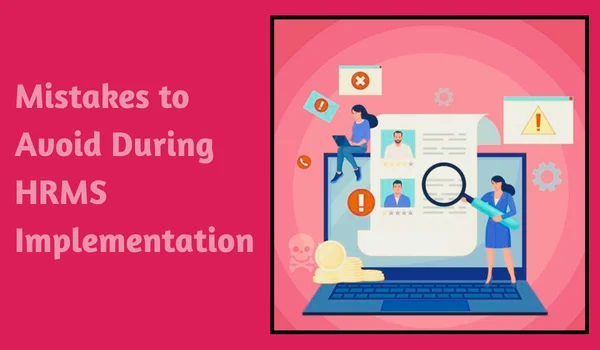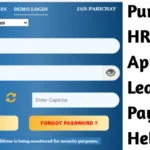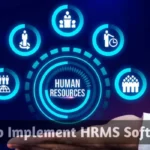Implementing an HRMS (Human Resource Management System) can revolutionize your HR operations — automating payroll, streamlining attendance, improving compliance, and enhancing employee experience. However, despite the best intentions, many organizations face delays, cost overruns, or failure to achieve expected benefits simply because they fall into common traps during implementation.
As an HRMS expert, here are the Top 10 Mistakes You Must Avoid During HRMS Implementation to ensure a smooth rollout and long-term success.

Not Defining Clear Objectives
The Mistake:
Jumping into implementation without identifying what you want to achieve.
Why It Hurts:
Without defined goals (e.g., automating payroll, improving attendance tracking, ensuring compliance), you’ll end up with a bloated system that’s hard to use and doesn’t solve your actual problems.
How to Avoid:
Set specific, measurable goals for your HRMS project and align them with business needs.
Choosing the Wrong HRMS Software
The Mistake:
Selecting a tool based on price, brand, or popularity rather than features and business fit.
Why It Hurts:
An unsuitable HRMS leads to poor adoption, frequent workarounds, and integration headaches.
How to Avoid:
Compare vendors based on your requirements — such as payroll processing, biometric integration, compliance support, and scalability.
Poor Data Preparation and Migration
The Mistake:
Importing unclean or outdated HR data into the new system.
Why It Hurts:
Incorrect employee records, attendance logs, or payroll history can lead to errors and legal risks.
How to Avoid:
Clean, verify, and format all data before migration. Use templates provided by your HRMS vendor and test data in a sandbox environment first.
Ignoring Employee and Manager Training
The Mistake:
Assuming users will “figure it out” themselves.
Why It Hurts:
Low adoption, incorrect usage, and resistance to change can derail the entire implementation.
How to Avoid:
Conduct formal training for HR, managers, and employees. Share user manuals, videos, and FAQ documents. Choose HRMS platforms with intuitive UI and mobile access.
Underestimating Implementation Time
The Mistake:
Expecting the HRMS to be live in a few days without accounting for data setup, testing, and approvals.
Why It Hurts:
Rushed implementations often skip crucial configurations or testing, leading to failures.
How to Avoid:
Set realistic timelines with phases — planning, data migration, setup, testing, training, and go-live. Allocate at least 4–8 weeks depending on complexity.
Lack of Integration Planning
The Mistake:
Forgetting to consider how HRMS will integrate with existing systems like payroll, ERP, accounting, or biometric devices.
Why It Hurts:
Disjointed systems cause duplication of work and reporting errors.
How to Avoid:
Choose HRMS with open APIs and integration capabilities. Involve your IT team early in the process.
Ignoring Legal Compliance Configuration
The Mistake:
Not setting up statutory features like PF, ESI, TDS, and labor law compliance correctly.
Why It Hurts:
Can lead to penalties, audits, or incorrect tax filings.
How to Avoid:
Ensure your HRMS supports Indian compliance and consult with a compliance expert during configuration.
Not Involving All Stakeholders
The Mistake:
Letting only the HR team lead implementation without input from finance, IT, and department heads.
Why It Hurts:
Other departments may face functionality issues or reject the tool later.
How to Avoid:
Form a cross-functional implementation team to gather diverse input and improve acceptance.
Incomplete Testing Before Go-Live
The Mistake:
Skipping user testing or doing it superficially.
Why It Hurts:
Bugs, payroll miscalculations, or access errors may only surface after launch — affecting employee trust.
How to Avoid:
Run complete test cycles: dummy payroll runs, attendance logs, leave approvals, and ESS access. Involve real users in testing.
No Post-Implementation Support Plan
The Mistake:
Thinking the job is done after going live.
Why It Hurts:
Users need help, bugs emerge, and policies evolve — without support, the system becomes underutilized.
How to Avoid:
Ensure ongoing vendor support, assign internal admins, and schedule regular check-ins to optimize the system.
Conclusion
Successful HRMS implementation is not just about installing software — it’s about transforming your HR processes. By avoiding these top 10 mistakes, you can ensure your implementation is smooth, cost-effective, and delivers long-term value to your business.
Plan carefully, involve the right people, choose the right tool, and support your users — and your HRMS will become a powerful asset in your organization’s growth journey.

Hi, I am Kapil Kumar, founder and chief editor of indiasvibes.com, a platform delivering the latest updates on business, finance, entertainment, and sports. With a passion for insightful storytelling, I am and my team ensures our readers receive accurate and engaging content.

